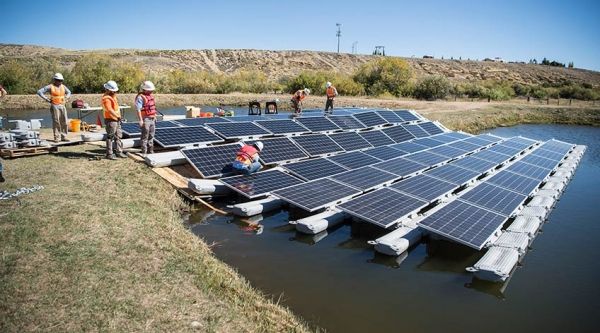National Renewable Energy Laboratory (NREL) researchers estimate that installing floating solar photovoltaics on the more than 24,000 man-made U.S. reservoirs could generate about 10 percent of the nation’s annual electricity production. Their findings, published in the journal Environmental Science & Technology, reveal for the first time the potential for floating PV to produce electricity in the United States.
While the United States was the first to demonstrate floating PV panels—with the first installation occurring 10 years ago on pontoons on an irrigation pond in Napa Valley, California—the idea has not received widespread national acceptance. The U.S. focus has primarily been on installing large-scale, ground-mounted solar panels, and only had seven floating PV sites as of December 2017. Floating PV sites are being deployed more overseas, however, with more than 100 sites as of the end of last year. Japan, for example, is home to 56 of the 70 largest floating PV installations.
“In the United States, it’s been a niche application; where in other places, it’s really been a necessity,” said Jordan Macknick, the lead energy-water-land analyst for NREL and principal investigator of the project that produced the paper “Floating PV: Assessing the Technical Potential of Photovoltaic Systems on Man-Made Water Bodies in the Continental U.S.” “We’re expecting it to take off in the United States, especially in areas that are land-constrained and where there’s a major conflict between solar encroaching on farmland.”
Read more at National Renewable Energy Laboratory
Photo: Floating PV being installed in Walden, Colorado. CREDIT: Dennnis Schroeder / NREL


